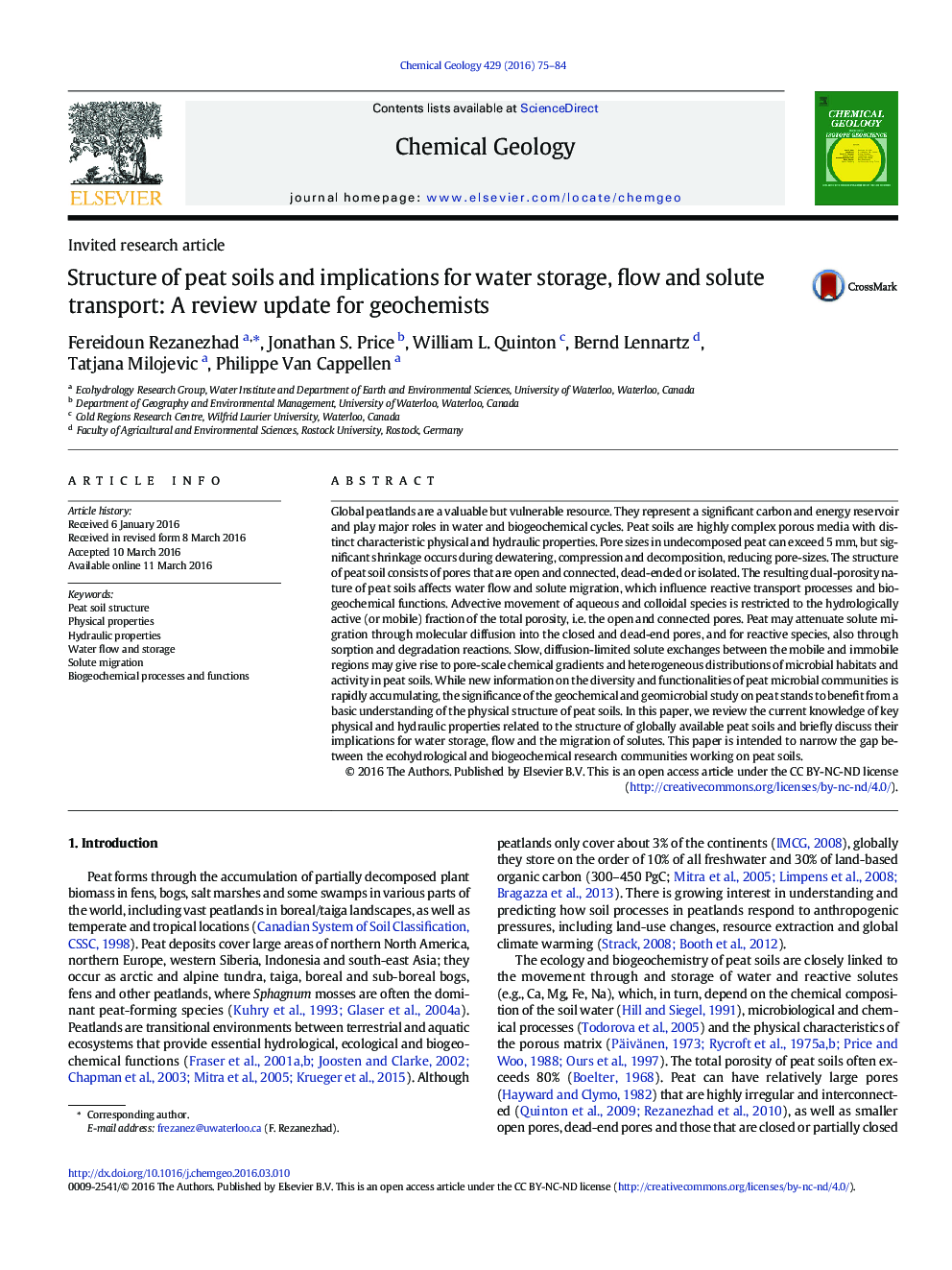| کد مقاله | کد نشریه | سال انتشار | مقاله انگلیسی | نسخه تمام متن |
|---|---|---|---|---|
| 6436107 | 1637545 | 2016 | 10 صفحه PDF | دانلود رایگان |
- Peatlands play major roles in global water and biogeochemical cycles.
- Peat is a highly complex porous medium with high organic matter content.
- Dual-porosity nature of peat soils controls water flow and solute migration.
- Structure of peat regulates reactive transport and biogeochemical processes.
Global peatlands are a valuable but vulnerable resource. They represent a significant carbon and energy reservoir and play major roles in water and biogeochemical cycles. Peat soils are highly complex porous media with distinct characteristic physical and hydraulic properties. Pore sizes in undecomposed peat can exceed 5Â mm, but significant shrinkage occurs during dewatering, compression and decomposition, reducing pore-sizes. The structure of peat soil consists of pores that are open and connected, dead-ended or isolated. The resulting dual-porosity nature of peat soils affects water flow and solute migration, which influence reactive transport processes and biogeochemical functions. Advective movement of aqueous and colloidal species is restricted to the hydrologically active (or mobile) fraction of the total porosity, i.e. the open and connected pores. Peat may attenuate solute migration through molecular diffusion into the closed and dead-end pores, and for reactive species, also through sorption and degradation reactions. Slow, diffusion-limited solute exchanges between the mobile and immobile regions may give rise to pore-scale chemical gradients and heterogeneous distributions of microbial habitats and activity in peat soils. While new information on the diversity and functionalities of peat microbial communities is rapidly accumulating, the significance of the geochemical and geomicrobial study on peat stands to benefit from a basic understanding of the physical structure of peat soils. In this paper, we review the current knowledge of key physical and hydraulic properties related to the structure of globally available peat soils and briefly discuss their implications for water storage, flow and the migration of solutes. This paper is intended to narrow the gap between the ecohydrological and biogeochemical research communities working on peat soils.
Journal: Chemical Geology - Volume 429, 1 July 2016, Pages 75-84
